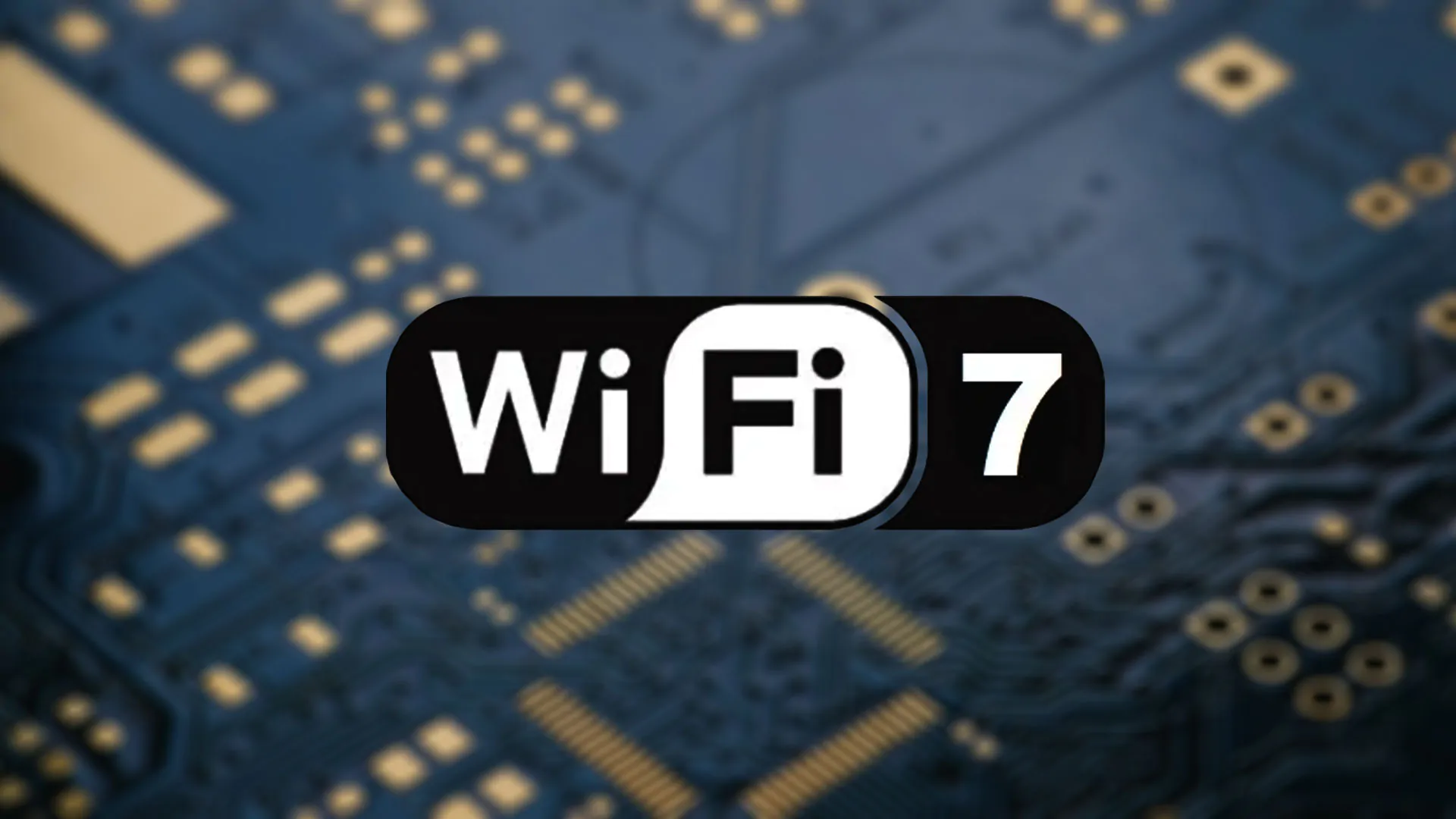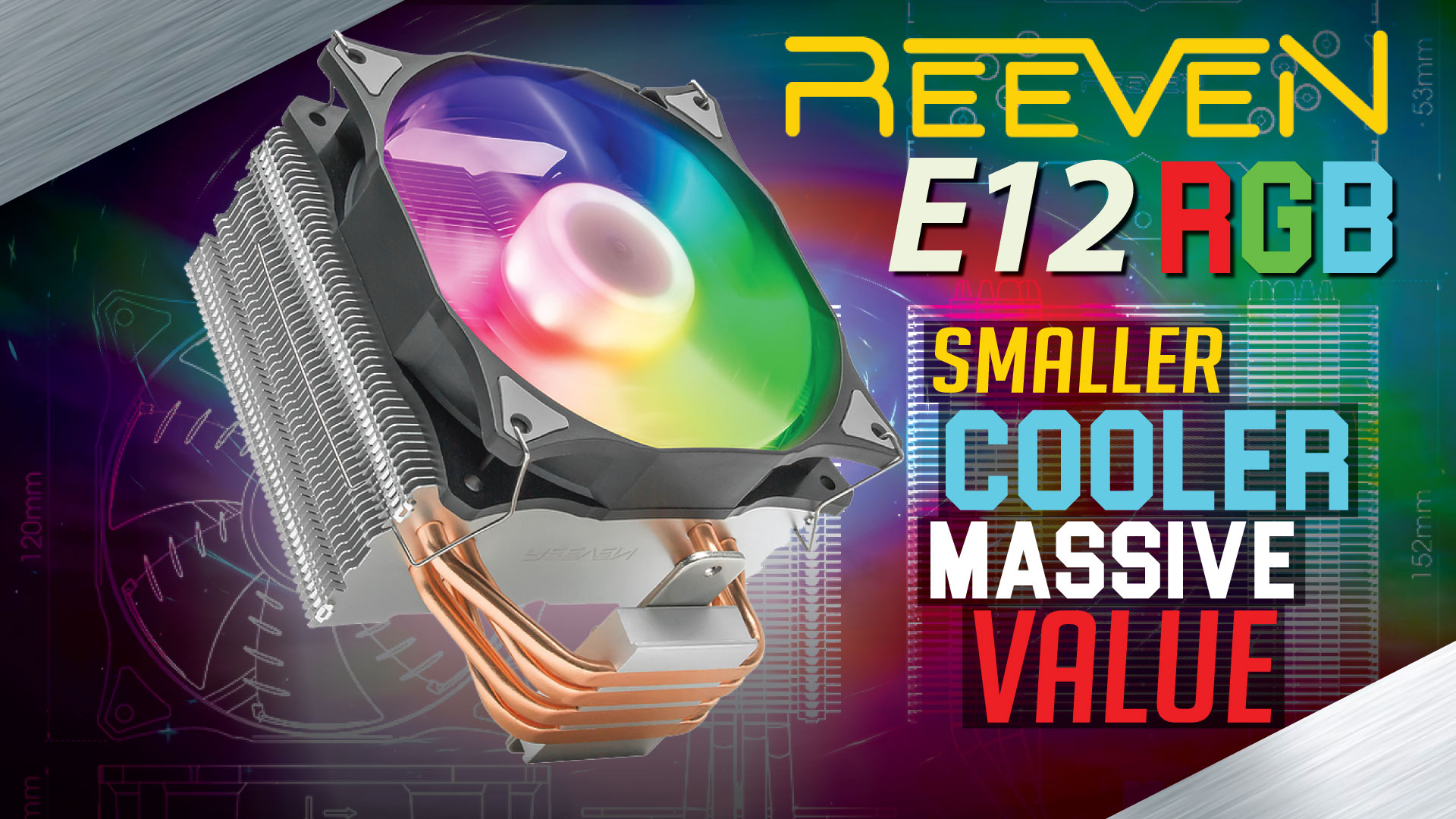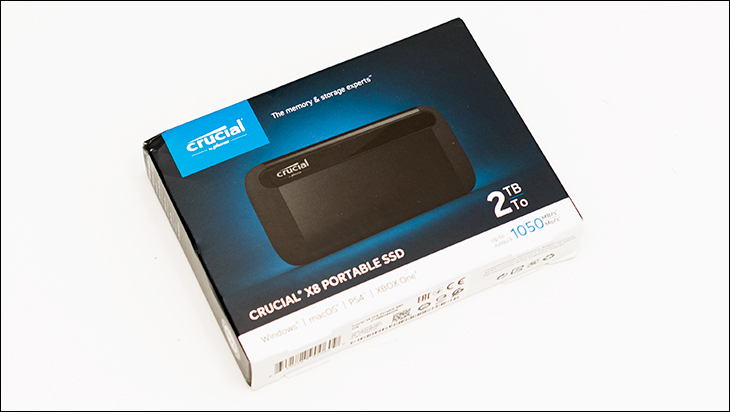
The shipping container the latest 2TB capacity version of the X8 series has not changed – beyond labeling that is. It is still the same attractive (in conservative Crucial fashion), informative, and generally speaking a good design. The downside is that is you will have to actually read what model you have in your hands as this shipping container is very, very similar to what Crucial uses for multiple other lines… including internal SSD drives. So be careful and pay attention if you are purchasing via a bricks ‘n’ mortar retailer.
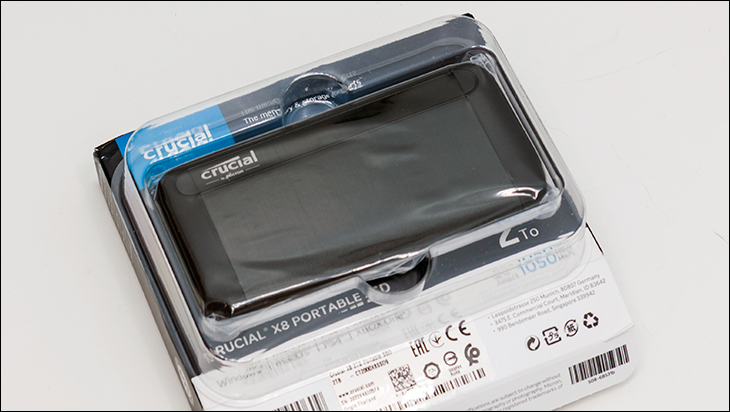
Just as with the exterior Crucial has once again taken a ‘if is not broken do not fix it approach’ to protection. As you can see, the internal protection consists of a plastic tray that both secures the X8 in place while the box is in transit… and will absorb the impact of a bad fall before any blunt force trauma is passed on the drive itself. This is a tried and true design that Crucial has used, and perfected, over the years and we have zero issues with it.
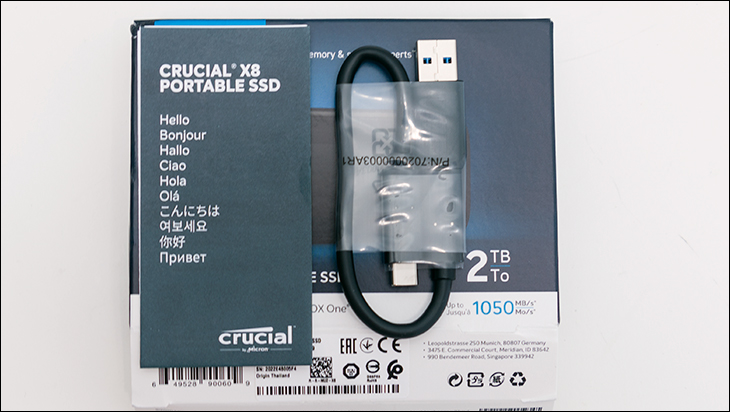
The same cannot be said the accessory list. It is not the same as what the 1TB variant shipped with originally. The original mega-capacity X8 came with a small pamphlet, a short USB 3.1 gen 2 Type-C to Type-C cable, and a Type-C to Type-A adapter. Crucial has dropped the adapter from this model’s list. Instead, if you need it… you need to buy it separately. Thankfully, Crucial has worked out a deal with Amazon and the cost is literally only a few dollars. We are unsure why they have saved this one dollar or so on their build costs but if it does help keep the costs down it is a good thing.
On the positive side, while the included cable is indeed short it is twice as thick as the typical ‘free’ cable included with most drives these days. This increased thickness (and shortened length) decrease EMI “noise” and reduces transmissions errors. Not included in the box but easily, and freely, available for download is Crucial’s Storage Executive software application. This application has been updated so as to work with the X8 series. With it you can easily check on everything from the temperature to its SMART status, to even update its firmware. As such it is worth your time and bandwidth to do so.
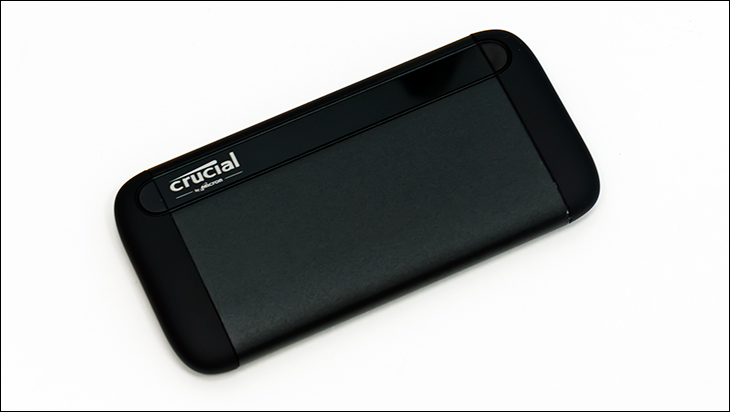
Moving on. The chassis of the latest capacity X8 model has not been changed, modified, or refined in the least. This is neither a good nor a bad thing. Instead we are a bit lukewarm on it. While a bit… chunky for what it is and offers, the X8’s combination of metal and plastic works and works well. It is both easy to carry, easy to hold, and is durable enough to shrug off most of life’s bumps and bruises that inevitably happen with external storage solutions. The only issue we have with it is it is a compromise design. One that emphasizes portability and lowered asking price over everything else.
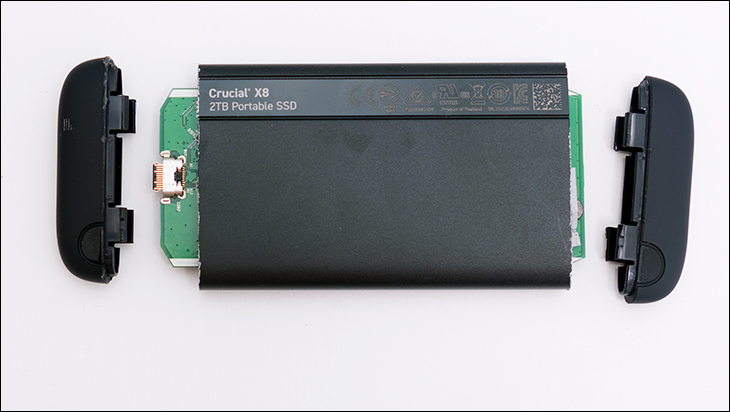
This compromise means that while it is technically drop rated to 7.5 feet… this is based upon falling on to carpeted concrete. This is a rather easy standard to meet and one that bares only passing resemblance to real world drops from typical heights. To be blunt, the metal portion of this chassis will easily survive true 2 meter drops on to hard surfaces (e.g. Military MIL-STD-810G standards) but the two plastic end caps may not. They are the weak link in the survivability of the X8, and do have a tendancy to go flying off into space shortly after a bad fall.
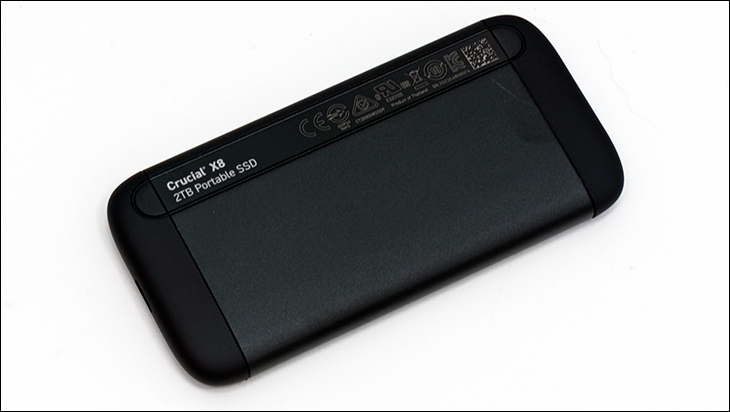
Due to this pressure fitted plastic end caps the X8 is also not IP rated for dust or water resistance. A coat of sealant and a cap for the Type-C port would have fixed this issue nicely. However, it and the certification process cost money, and the X8 2TB is all about being as best a value as possible for the average buyer. As such these standards would have (arguably) needlessly increased the build cost, and this increased cost would have been passed on to you the consumer. If such features are important to you, the X8 may not be an optimal fit. The same is true if you need an activity LED… as the X8s lack such an ‘advanced’ feature. These days the lack of an activity LED is a downright odd thing to leave on the cutting room floor. It will take some getting used to, but it is one less place where water or dust can get at the internals.
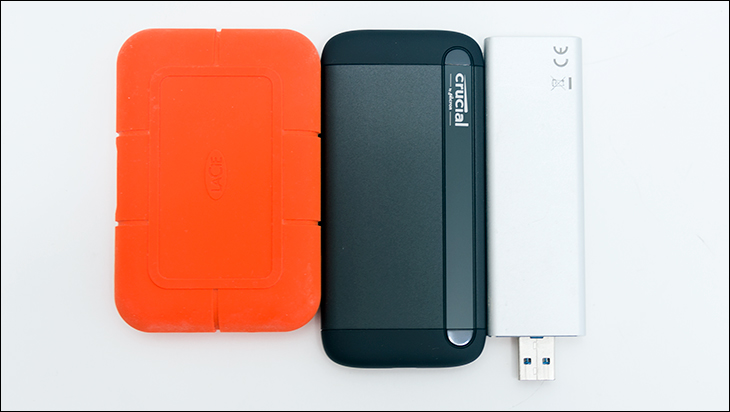
On the positive side, the X8 series is not all that chunky… and certainly not that hard to carry. You can easily fit this bad boy in a pocket and have little worries over it breaking. Certainly more worries than the shorter but fatter LaCie models, but less than the typically smaller M.2 to USB adapters. Basically, the dimensions are a compromise, but one we take very little issue with.
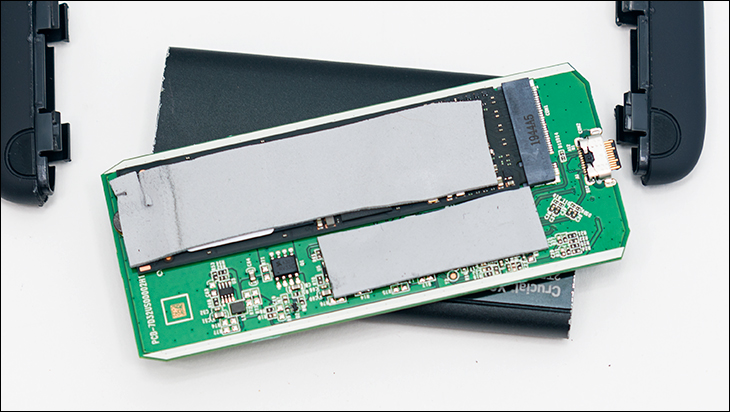
We have no issue with it because the increased mass and surface area allow for better cooling… as the metal portion of the case is one large heatsink for the internal M.2 drive and NVMe to USB bridge controller. This becomes rather blatantly obvious once you shuck the X8 (a process we would not recommend as it will be… destructive to say the least). As you can see the single sided adapter PCB is covered nearly its entirety with heat pads. These heat pads not only help transfer heat to and from the various hot running components to the chassis they also provide a wee bit of ‘cushion’ in the case of “sudden impact syndrome” (aka you dropped it).
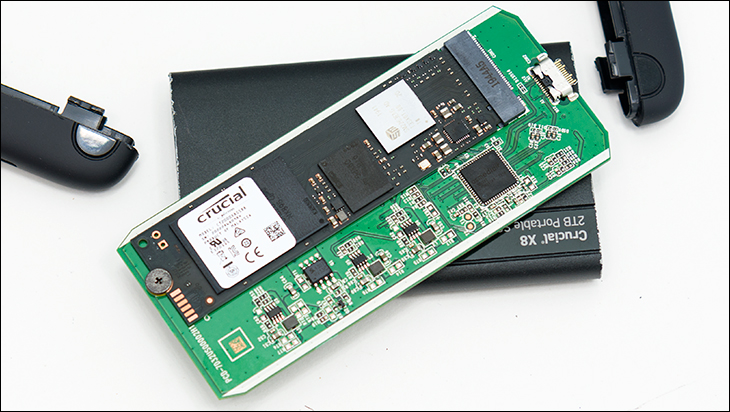
Peeling the heat pads away and you will see that not much has changed from a hardware perspective. This is a good thing. For example, the ASMedia ASM2362 PCIe 3 to USB Type C bridge controller is still one of the better options available and most assuredly passes on TRIM commands to the drive. The NVMe SSD is a P1 M.2 2280, which is also still a good choice for 10Gbps busses. It may not hold a candle to the P5 M.2 series, but to be blunt is a better choice than the P2. The P2 is a dram-less model and is less than optimal for external storage duties; whereas the older P1 series may use an older Silicon Motion SM2263 controller but comes with a large RAM cache buffer and a proven track record. In the 2TB capacity variant this RAM cache buffer is a whopping two gigabytes (via a Micron DDR4-3200 MT40A1G16RC-062E:B IC).
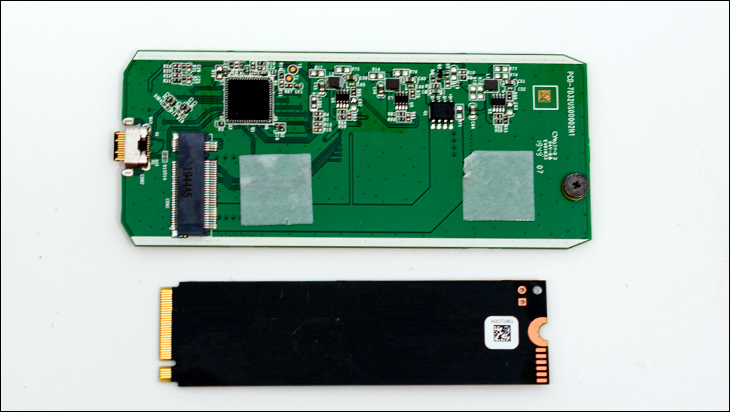
If you pay close attention a few things also pop out. First and foremost is even though the capacity of the X8 (and its P1) have been doubled from 1TB to 2TB the M.2 drive housed inside is still single sided! This was not expected, as the original internal variant P1 2TB was a double sided drive that made use of 4 NAND ICs to hit its 2TB rated capacity. The P1 2TB’er used here is single sided (with heat tape holding it firmly to the adapter PCB). This is highly unusual and points to one thing and one thing only: that while it is technically possible that Crucial is just using higher stacked NAND ICs, the most likely case is that Crucial has ‘submarined’ or ‘silently upgraded’ the P1 series from older Micron 64-Layer QLC NAND to newer 96-layer QLC NAND like they did with the BX500 series a while back. Intel recently did something similar with their version of the P1… but they changed the model from 660p to 665p. Crucial has not. We are naturally against such silent changes but the NAND tech (i.e. QLC / 4-bits per cell) is the same and generally speaking the 96-layer QLC NAND is a bit better than its predecessor so it is hard to get too upset by it.
In either case, each of the two NAND ICs are eight Terabits (1 TB) in capacity. Assuming this is 96-layer QLC NAND ICs the die packs are not stacked as high as you would expect (as the change from 64 to 96 layers means a 50 percent increase in die layer capacity); however, regardless of the generation they are the NAND cells themselves are stacked deep here… and it will need all the heat shedding abilities it can get. Thermal limiting of QLC is a real issue and a real concern in passively cooled environments. Thankfully, in testing the metal chassis portion of the X8 2TB works just as well as expected at limiting thermal issues. When you push this big boy… expect the case to get toasty warm. Never to the point of burning, but certainly warm. This does minimize thermal limiting fairly well, but if you plan on pushing your external drive hard for extended periods of time (e.g. as a scratch disk for various video editing programs)… the X8 series may not be optimal for you.
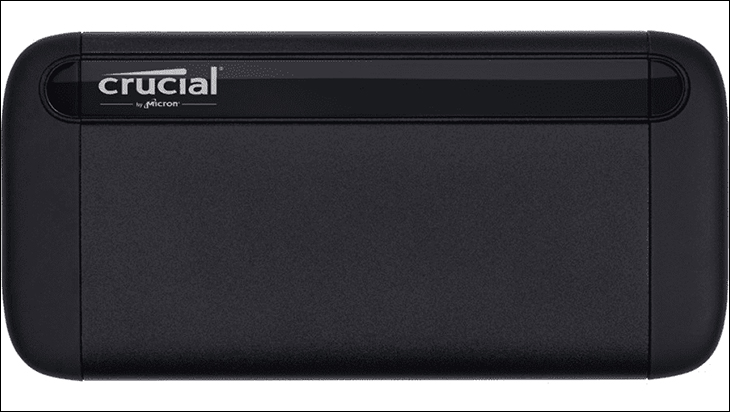
The same is true for those who may not hammer their external drives with constant writes, but do dump massive amounts at one time (e.g. a ‘dump drive’ for video or photography card backup duties). In such cases, the floating capacity of the pseudo-SLC write buffer (or what Crucial calls “Dynamic Write Acceleration”) varies in size depending on how much free capacity the drive has left. Remember each bit of ‘SLC’ buffer requires four bits of QLC NAND capacity, so while it starts out large it does shrink fairly quickly… and when exhausted write speed plummets to hard disk drive levels. This is the main compromise that Crucial made in order to offer a massive capacity, high speed external drive with a relatively low asking price.
This NAND choice really is key to understanding if the X8 is right for you or not. For the average user the X8 is going to offer just as much performance as drives costing significantly more than it, but if you routinely exhaust the write buffer it will offer lower performance than what the typical SATA SSD based model in this price range can do. So those that are not ‘typical users’ should probably turn their focus more towards TLC NAND based models offered by the competition. Anything less than that class of drive will fail to fully satisfy your need for speed.




